It’s been a month since we’ve done a blog posting on game repair. I apologize for this, but it’s been one hell of a month. We bought nearly 40 games from a local operator, and it took a month to get them fixed. The cost in time was enormous. It makes you wonder if it was all worth it. Back to the blog, here’s one game we repaired and sold, a 1957 Keeney Bowlette skee ball game. When done it was a pretty cool thing, and in many respects, I regret having it gone. But the good news is we also got a CCM skee ball game, in much better condition, and kept that. (You can read about that repair in a coming posting.)
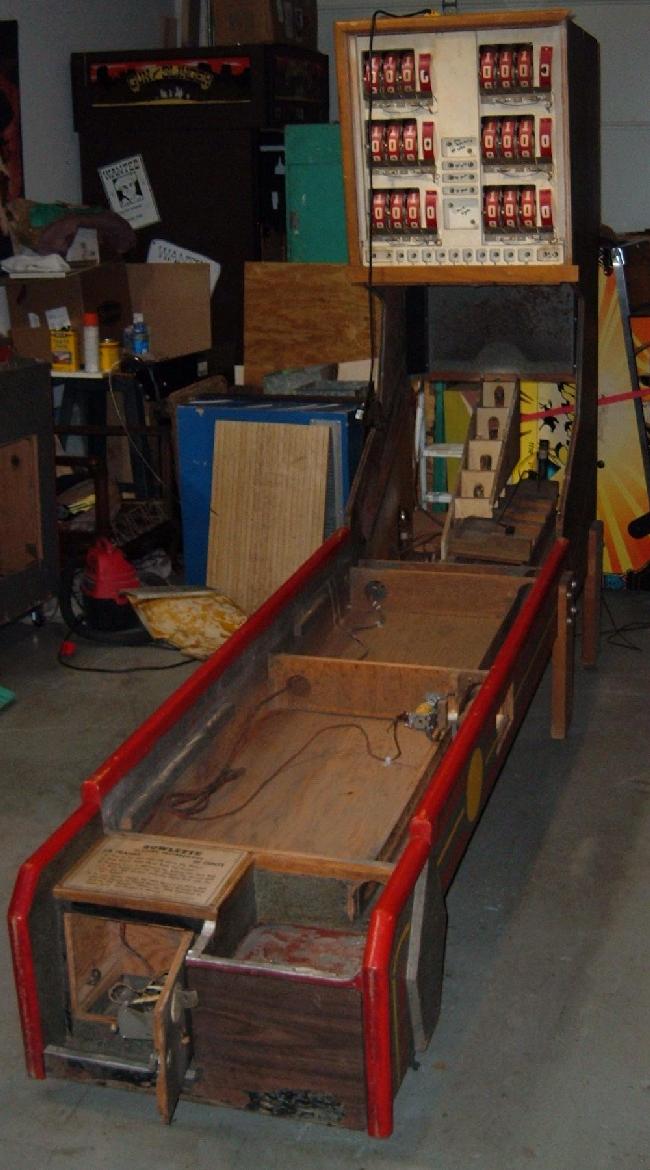
Filled to the gills with almost 40 games from the recent warehouse buy.
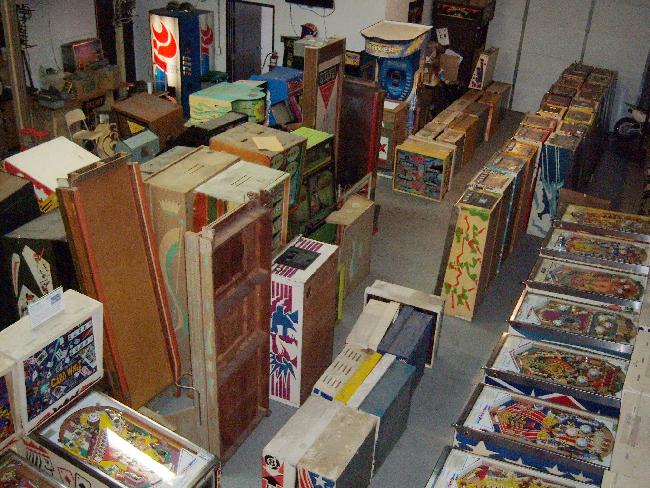
To be frank, I had never seen or really ever even heard of this game before. I’m not a huge skee-ball guy, I mean I like them, but generally I prefer a ball bowler over skee ball. Add to that it’s a Keeney, which I had never worked on. Yet after having the game up and working for a week or two, the game really grows on you. One of the friends was a skee ball guy, and he showed me some tricks to game play that really changed my opinion of skee ball. Also the features of the Keeney Bowlette were pretty cool, and that added to the enthusiasm.
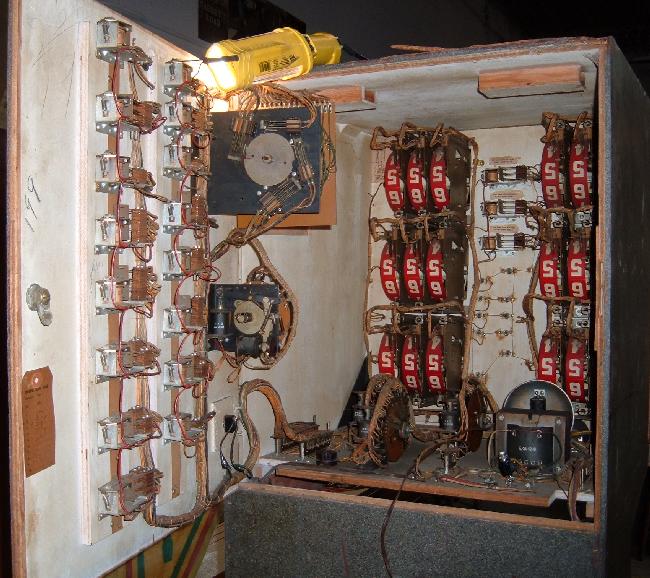
Going though the game was pretty stock EM repair stuff. Make sure all the stepper unit step up and step down (or reset) and are clean. Make sure all the switches have proper adjustment. Make sure all the mechanics are working.
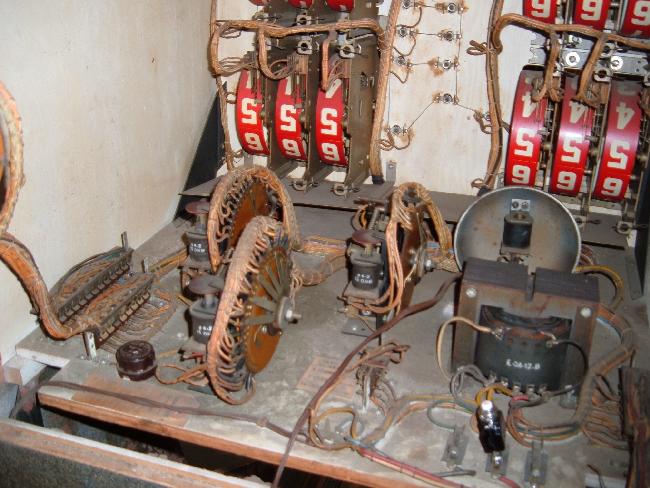
Keeney stepper units were a bit different than other manufacturers. The relays and score motor were very much like CCM games, so that was familiar. The steppers were just different. Not that this was bad, it was just interesting.
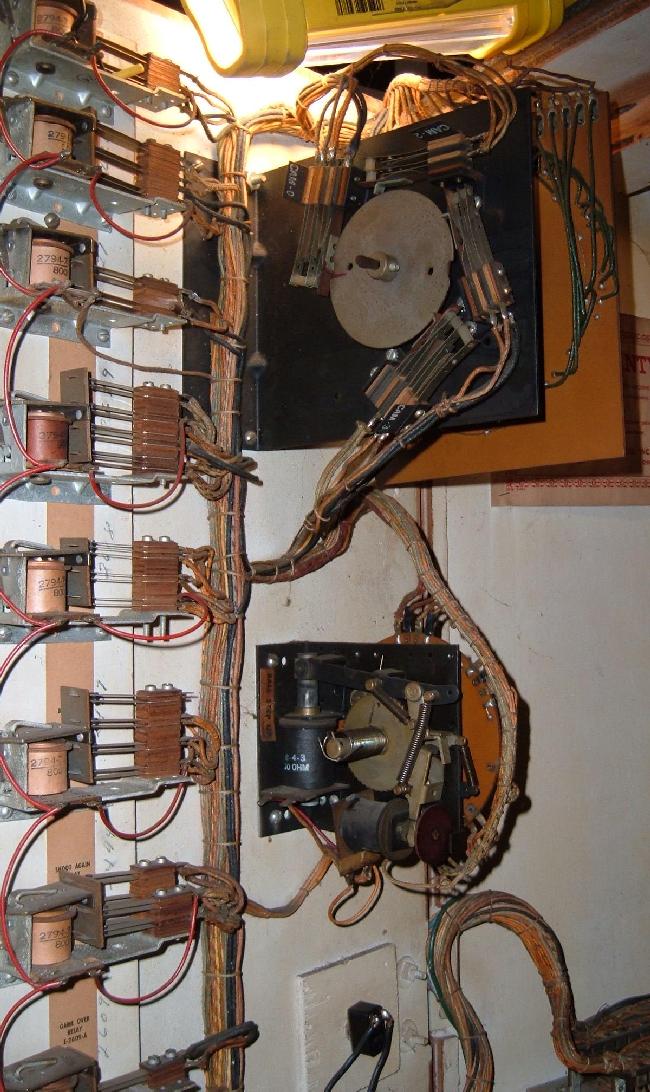
Skee balls generally aren’t that difficult to go through. They are much less complicated than say a ball bowler. Heck they’re less complicated than a shuffle alley too. No pins to deal with, no motors for the ball or pin resets, less relays, it’s pretty simple for a game that on the surface seems like a ball bowler. One thing that always does need some cleaning and adjustment is the ball pit (seen below.) It’s not complicated, there a switch for each ball hole, which corresponds to a particular point value (10 to 50, with a corresponding point relay in the backbox.) Also there’s a mechanism to hold the current ball, only allowing scoring for one ball at a time. This is done because in skee ball the player can throw balls very fast, faster than the game can score them. This mech has to work right too for accurate point accumulation. In the picture below you can see the ball hold mech and a switch for each of the five hole scores.
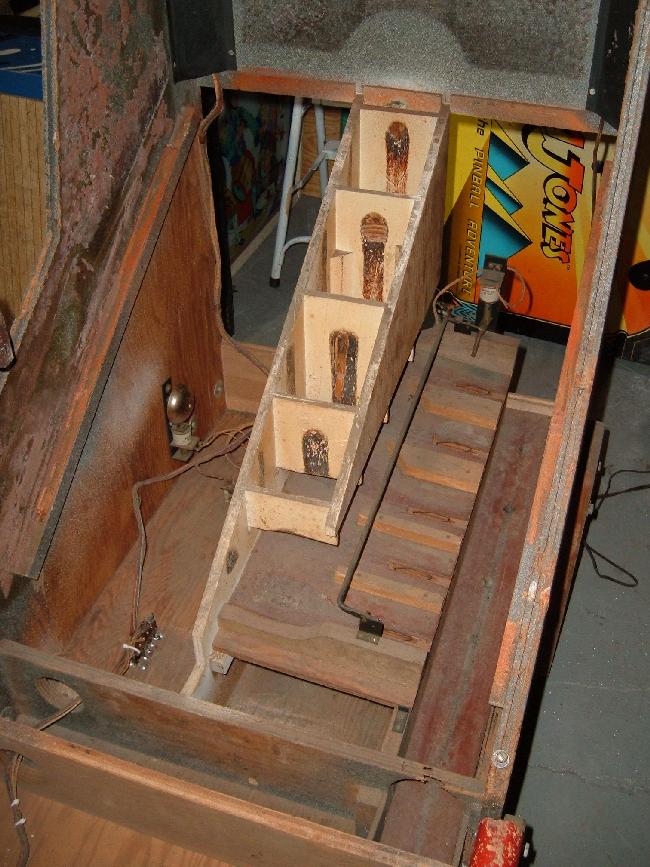
The real problem with this bowler though is a problem I see on nearly every skee ball machine – that’s the ball release mechanism. On this game it was missing. That’s pretty common, but it really screws up the game play. The Keeney Bowlette works by giving 3 balls per frame. After the 3 balls are thrown, the game releases the trapped balls to the player for the next frame (there’s 4 frames in this game, 3 balls per frame.) If it’s the end of the game, the machine holds the balls. That’s how it should work, but with the ball release mech missing, the balls just roll back to the player. Can’t have that, yet with the mechanism missing, it’s rather hard to repair. To fix it, I had to come up with a solution, and decided to use some Williams WPC flipper parts. I have a lot of them, and in the future, the mechanism will be easy to service.
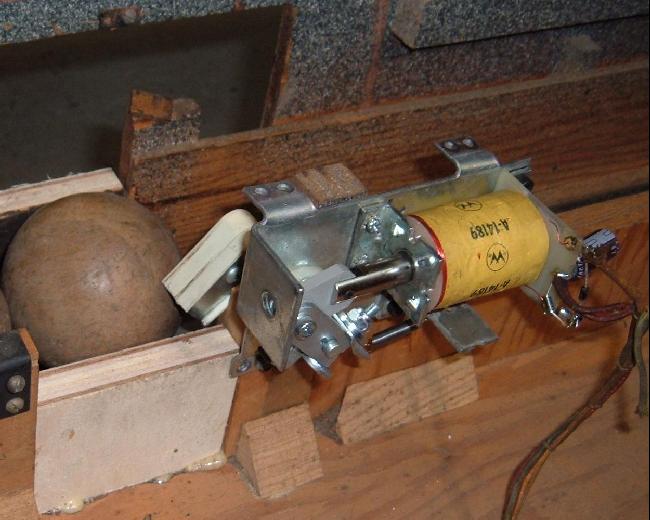
The flipper mechanism fit nicely in the space allocated. I used a Bally flipper bat that someone had cut done from 3″ to 2″ long. It worked well to hold the balls in place. The coil was something I had laying around, about 30 ohms, and just 2 lugs (instead of 3 lugs.) It worked well, but could have used a regular flipper coil with an EOS switch too.
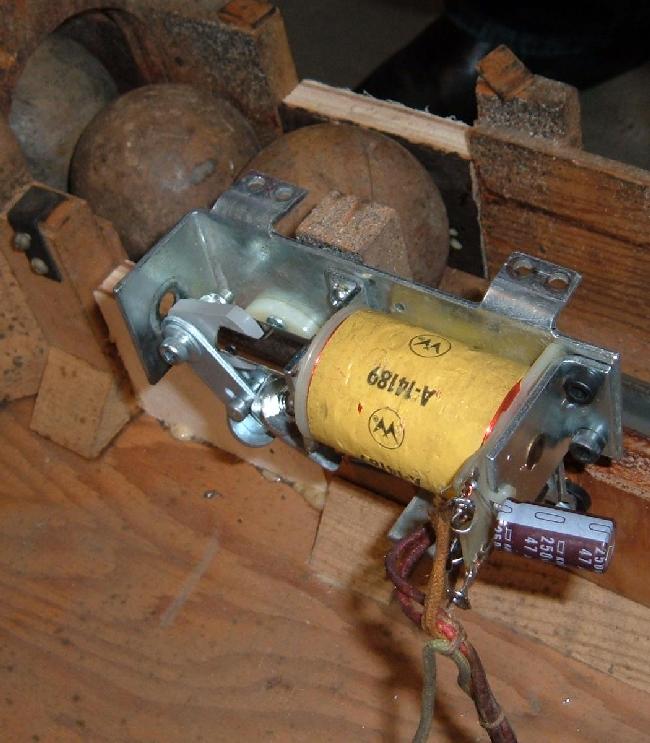
The only trick to this whole adaptation was to use two 1n4004 diodes and a 47mfd 100 volt capacitor on the coil. This was done to convert just this coil to DC voltage instead of the stock AC voltage. Why? Because otherwise the assembly really buzzed from the AC voltage. This conversion quieted the assembly and made it a bit more perky too.
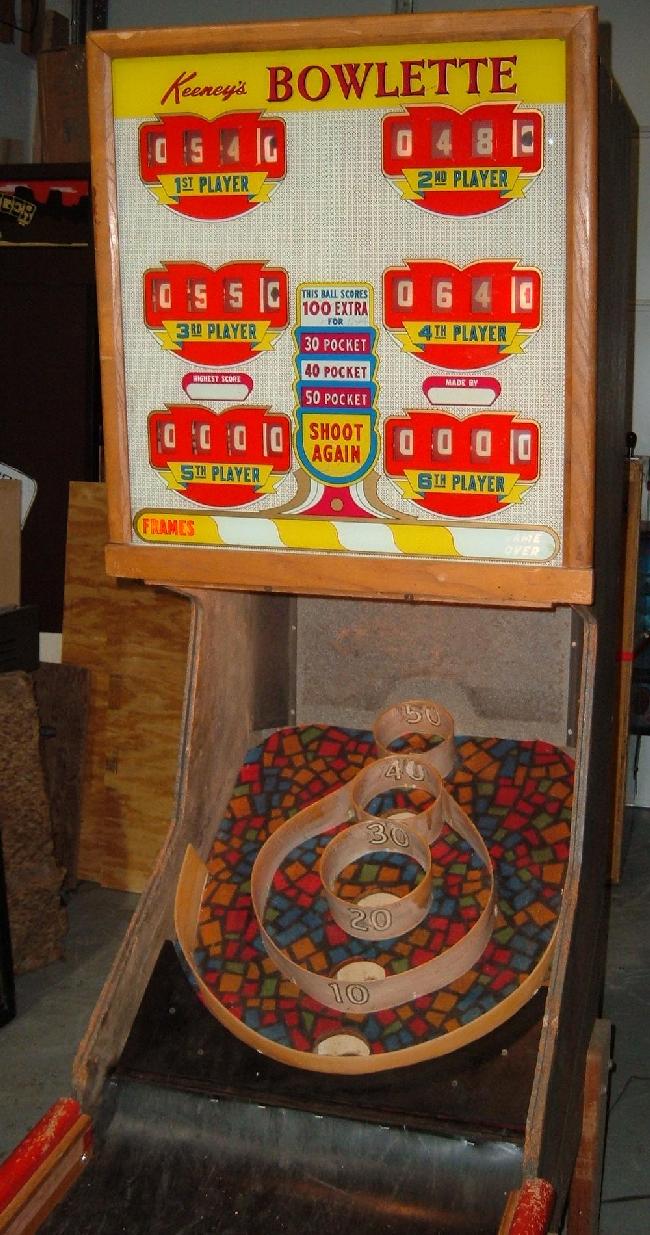
The only left to do was to re-cover the lane. One of the club members (thanks Doug!) had some rubber belt that was 2 foot wide, so we used that. It worked pretty well too. We should have recovered the ball scoring area too. Check out that funky 1970s carpet there! Just for what this game was ultimately going to sell for, it didn’t make sense to do that work. Sometimes you have to draw the line, and figure out if the “juice is worth the squeeze.”

Time for some game play. The cool thing about this game is shooting for the additional 100 points on each frame. That is, if you hit the lighted point value in any frame (30,40,50 points, depending on the frame), you get an additional 100 points. Also at the end of the game, in the last frame and on your last ball, if you hit the 50 point pocket you keep shooting – that is you get endless additional balls. But as soon as you miss that 50 point pocket, the game is over. These little game features really make the machine fun and competitive.